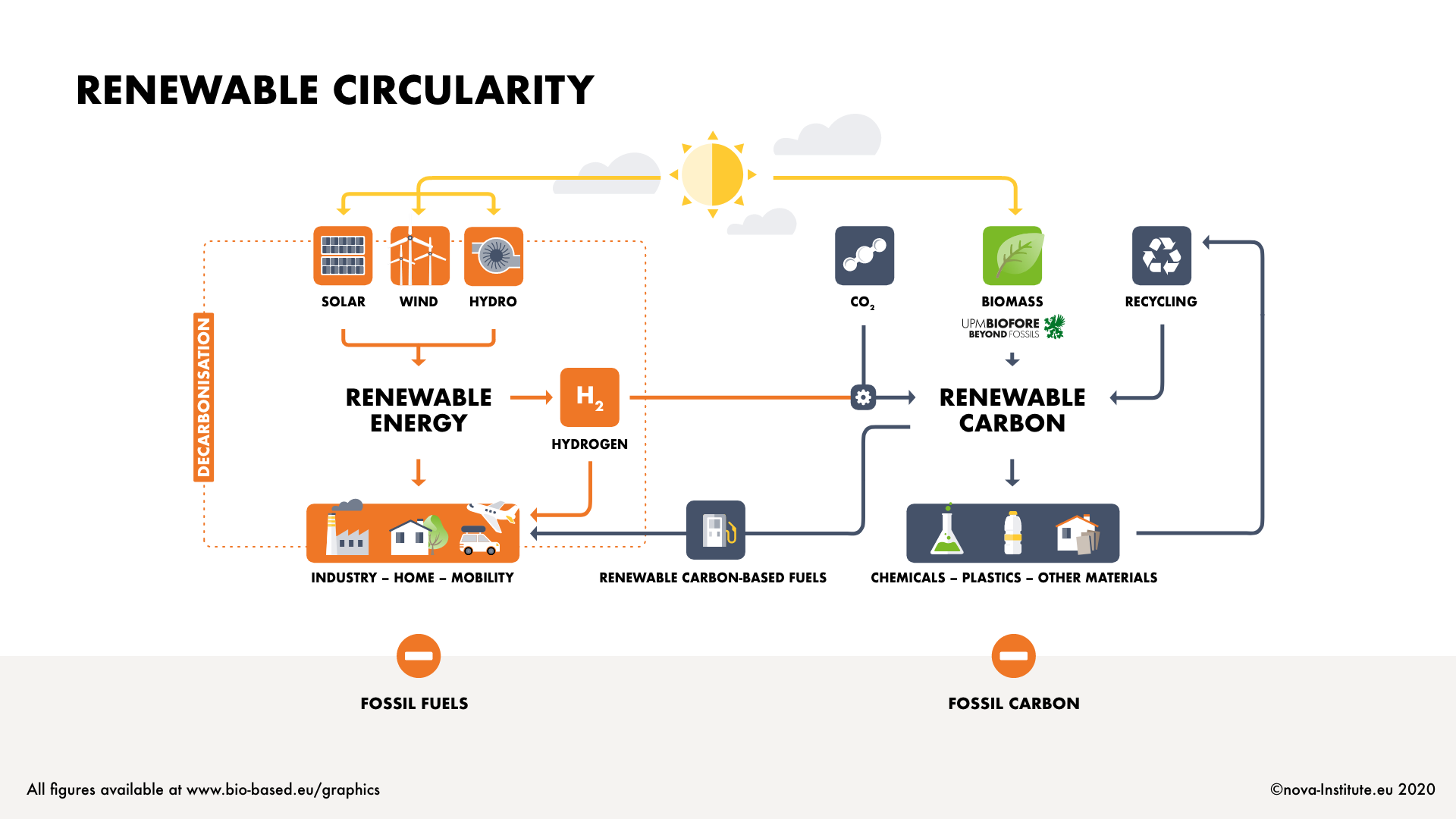However, fossil resources are the backbone of today’s chemical industry, so we need real, permanent change to raw materials and processes. We need to introduce renewable raw materials – in our case at UPM Biochemicals, side streams from forestry and sawmills – as a resource to manufacture new or better materials and products.
Circular is central to our UPM ethos. Therefore, it will be important for us know where our products are used and we need to make the utmost effort that they contribute to the circular economy in the best possible way. There can be no question, that a PET bottle, for example, must be recycled.
But even within an excellent recycling loop, there's always losses – and together with growing demand (due to population and economic growth) – we will always need new feedstock entering the product cycle. To mitigate climate change, this material should be from renewable sources, replenishing with renewable circularity.
In the sector that UPM Biochemicals focuses on, we have three alternative options to eliminate fossil resources.
First, recycling. Recovering the resources that we already have and keeping them in the material cycle is essential. There are different processes that are currently being applied: mechanical recycling, which is typically a sequence of sorting, shredding, washing and fabrication. Relatively new still is chemical recycling, where the plastics are dissolved and then used as a feedstock. Maximising the recycling rate of products helps to minimize the demand of fresh feedstock entering the cycle.
Second, CO2 capture and utilisation. CO2 can be captured at certain point sources at chemical refineries, steel and cement production plants, for example and subsequently converted into various products via e.g., fermentation.
The third option is biobased feedstocks. As plants and trees grow, they capture atmospheric CO2 and use it to build their tissue. This biogenic carbon can be used to produce various materials from it.
Beyond the actual product use, additional items need to be considered. In case of woody biomass, we need to carefully align all functions of a forest. Sustainably managed forests increase their ecological, economic and social benefits.
However, I'm convinced we will also need to step-up the usage of underused side and waste streams, too, such as from forestry, agriculture or urban environments.
Using carbon neutral and renewable feedstocks to provide sustainable CO2-light alternatives for the chemical industry is the approach that we at UPM Biochemicals are following.
